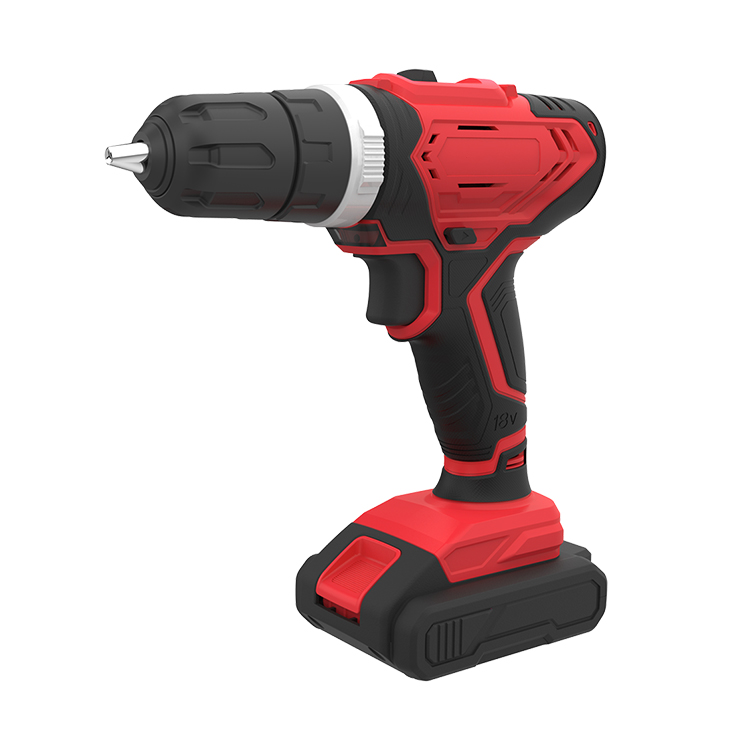 English
English 
 English
English 
This article explores the key parts of an electric drill, breaking down each component and its function.
Electric drills are essential tools in both professional and DIY settings, used for tasks ranging from drilling holes to driving screws. To make the most of your drill and select the right one for your needs, it's important to understand its key parts and how they function. In this guide, we'll walk you through the main components of an electric drill and their roles.

The motor is the core component of any electric drill. It converts electrical energy into mechanical motion, powering the drill bit. The strength and efficiency of the motor directly affect the drill's speed, torque, and overall performance.
Corded Drills: These use AC power, providing consistent performance.
Cordless Drills: Equipped with a battery, these drills offer mobility but depend on battery life.
The chuck is the part that holds the drill bit securely in place. It is adjustable, allowing you to insert and tighten various drill bits.
Keyed Chuck: Requires a key to tighten or loosen.
Keyless Chuck: Can be adjusted by hand for quick bit changes.
SDS Chuck: Used in heavy-duty drills, ideal for masonry and concrete.
The trigger is the control mechanism that activates the drill. Most modern drills have a variable-speed trigger, which means the harder you press, the faster the drill spins.
Variable Speed: Offers greater control when drilling different materials.
Lock-On Button: Keeps the drill running without continuous pressure on the trigger.
The gearbox determines the drill's speed and torque settings. It allows you to adjust the drill's performance to match the material you're working with.
Low Gear: Provides more torque, ideal for driving screws or drilling tough materials.
High Gear: Delivers higher speed for drilling into softer materials.
The torque adjustment collar, or clutch, controls how much torque the drill applies before disengaging. This feature helps prevent over-driving screws and protects the motor from damage.
Lower Settings: Suitable for softer materials.
Higher Settings: Ideal for harder materials and tougher tasks.
Cordless drills rely on battery packs, typically lithium-ion, which provide power to the motor.
Voltage: Higher voltage indicates more power.
Capacity: Measured in amp-hours (Ah), affecting how long the battery lasts per charge.
This switch allows you to change the drill's rotation direction, which is useful for both drilling and removing screws.
Forward Mode: Used for driving screws or drilling holes.
Reverse Mode: Ideal for removing screws or backing out the drill bit.
The handle is where you hold the drill, designed for comfort and control. It often features an ergonomic design to reduce hand fatigue during extended use.
Pistol Grip: Most common design for a secure hold.
T-Handle: Provides better balance, especially for cordless drills.
Many drills now come with a built-in LED light near the chuck. This feature illuminates the work area, making it easier to see in low-light conditions.
Improved Visibility: Ideal for working in dimly lit or tight spaces.
Precision: Helps ensure more accurate drilling.
The auxiliary handle, or side handle, is used in more powerful drills to provide additional control and stability. This feature is essential when performing heavy-duty drilling tasks.
Extra Leverage: Enhances control over the drill.
Stability: Reduces strain and improves accuracy.
Understanding the parts of an electric drill not only helps you operate the tool more effectively but also aids in making an informed purchase decision. Knowing how each component works allows you to choose the best drill for your specific needs and use it to its full potential.
As a electric drills manufacturer, we provide a range of tools built for durability and precision to meet your business needs. If you’re looking to upgrade your equipment or need customized solutions, get in touch with us today!
Hebei Sinotools Industrial Co., LTD.
Copyright © Sinotools Industrial All rights reserved. Technical Support:REANOD